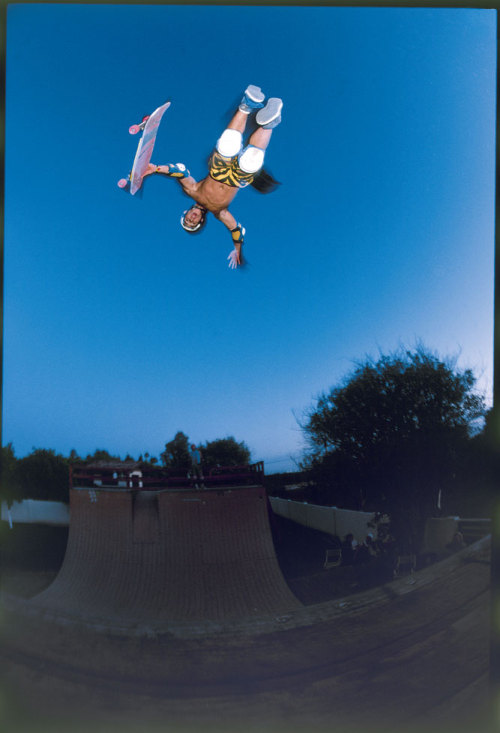When skating a half-pipe one oscillates between the two sides of the transition in order to gain speed. Which aspect of daily life, if any, does this mechanism reflect?

Here are a few suggestions:
a) Overshooting: In 'Feal the fear and do it Anyway' the author explains how progress toward a goal seldom occurs in a straight line, but rather, in a zig-zag of self-correction. She provides the analogy of an airplane navigation system which is programmed to travel to a specific destination but doesn't actually bring the plane there in a perfectly straight line. Rather, it overshoots and causes the plane to travel too far to the right, corrects itself and overshoots to the left, only to overshoot to the right again. Eventually, however, it arrives at the narrow strip of runway.
The author's message is that success does not necessarily require perfection at every step of the way. On the contrary, success is typically the product of much error which is repeatedly corrected and fine tuned.
Objections:
One major limitation with this analogy is that it views oscillation as a
means to an end. In the case of the half-pipe, however, oscillation may be an
end in its own right. Furthermore, in the pursuit of a goal, oscillation is an
incidental part of the activity - if one can do without it, one does. When skating a half pipe, in contrast, oscillation is an
essential part of the activity.
b) Compensation: People often express themselves in compensatory extremes. For instance, a mother may get angry with her misbehaving child, but only to regret her harshness and compensate by swinging to the opposite extreme, smothering her child with treats and copious indiscriminate love. Subsequently, she notices her child taking advantage of her kindness and shifts once more to an excessively stern mode.
Objections:
In the analogy, the oscillation between extremes is unintentional, negative, and a sign of imbalance. In the case of skating a half-pipe, however, it is intentional, positive, and requires much balance.
c) Dialectics: The Philosopher, Hegel, famously taught the notion of
dialectics, that consciousness functions in a perpetual three step process of thesis, antithesis, and synthesis. A dynamic visible at both the sublime and mundane levels:
Sublime: the thesis of
'being' is countered by the antithesis of
'non-being' and finds a synthesis in the notion of
'becoming'.

Mundane: Alex desires to talk to his friend (thesis); however, he realizes that it is inappropriate to do so while he's at work (antithesis); he thus decides to make the call during his lunch break (synthesis).
According to Hegel, every synthesis gives birth to another thesis, and hence the
dialectical process continues indefinitely.
Objections:
Perhaps Hegel's
dialectics overcomes the objections that were raised concerning the preceding two possible parallels:
A. Since the dialectic process is ongoing, it may be viewed as an
end in itself. It is also an
essential part of conscious development;
B. The
dialectic process is a
positive one and is largely an expression of
balance.
However, Hegel's process is not necessarily an intentional one, for it occurs at both the conscious and unconscious levels of humanity.
Please object!
If you have any objections to any of the above, please comment, for it is precisely this oppositional and argumentative form of discussion - which is richest when parties use the other side's arguments to strengthen their own -which allows people to soar higher and higher toward the truth...























